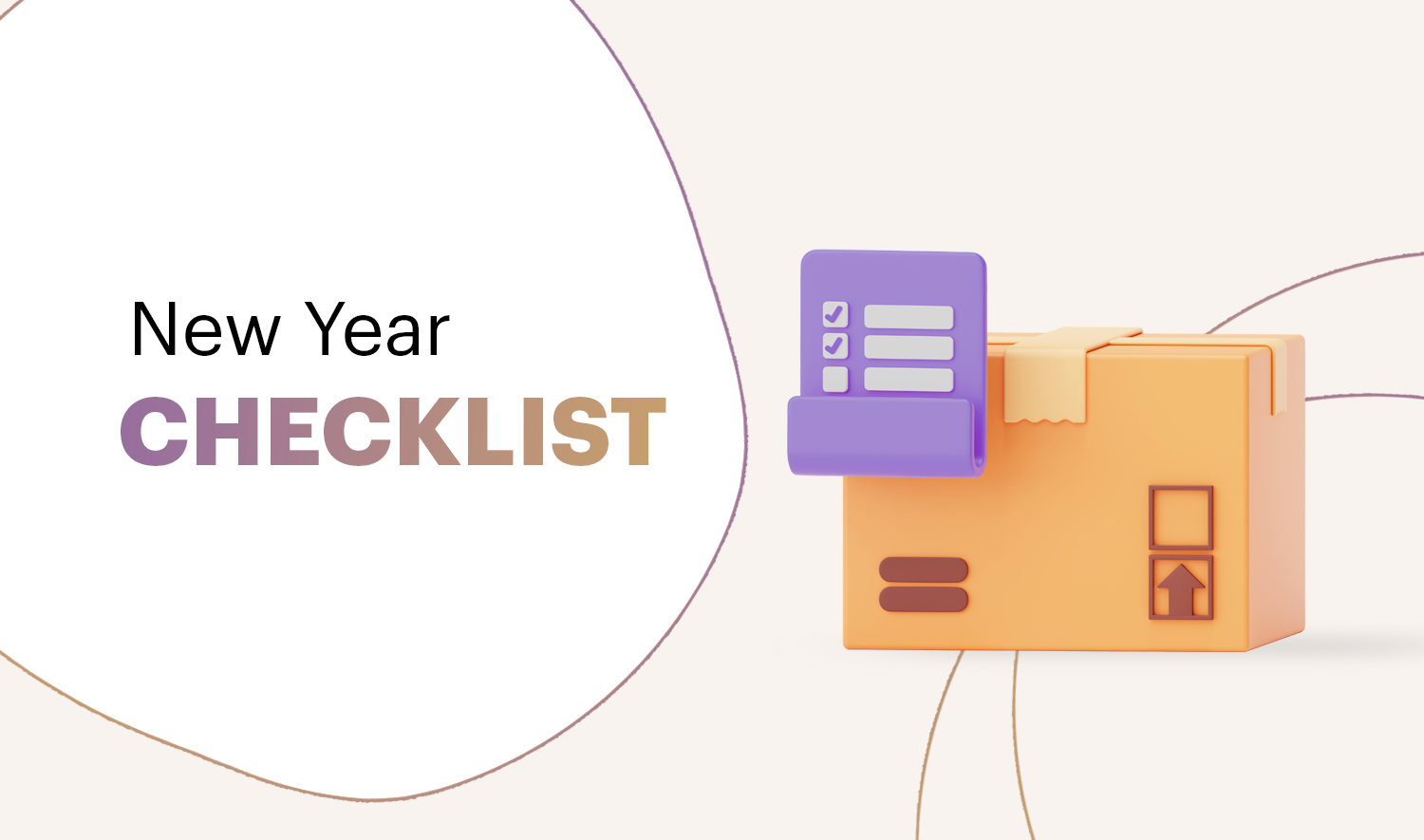The beginning of a new year always comes with a big to-do list. And you might feel overwhelmed by all the things that require your attention. But it’s also a great opportunity – a chance to use the rear-view mirror to plan for what’s ahead. It’s a chance to review what’s working, what needs work, and what solutions will take you to the next level. So here’s a New Year Checklist for Manufacturers to make sure you’re doing the right to-dos.
1. TAKE AN INVENTORY OF YOUR INVENTORY
Whether you use a manual counting method or an automated inventory management system, a beginning of the year inventory assessment is good practice. By reconciling a year-end physical count with database records, you’ll be able to value your current assets and assess whether your current day-to-day system is working. In addition to this valuation and assessment, you might discover some ways to improve your storage and accessibility methods. You and your team interact with your inventory every single day, but a new year assessment offers an opportunity for a big picture evaluation.
And speaking of your inventory, the beginning of the year is a great time to reach out to all of your vendors. Verify contact information, review pricing and contract agreements, and bring up any known concerns or plans for the coming year. Staying on their radar can go a long way to fortify your supply chain.
2. MANAGE YOUR SUBSCRIPTIONS, LICENSES AND ACCREDITATIONS
Most agencies that you interact with will send you renewal notices, but the beginning of the year is a great time to be proactive. Maintain an organized calendar for when all subscriptions, licenses and accreditations are due. This list probably includes city, county, state, federal, global and additional industry-specific agencies, so make sure you stay on top of all layers of regulation. Designate a point person for maintaining information regarding fees, due dates and compliance.
Managing this task is essential for day-to-day operation, but the benefit of including it in your new year checklist is that you can plan for related licensing events. Most agencies host annual conferences or continuing education events, and having advance notice is a great way to plan ahead and take advantage of those opportunities in the coming year.
3. RECONCILE YOUR FINANCIALS
The year always wraps up with an official closing of the books, and that keeps your financial department busy at the year’s end. A year-end financial report includes an income statement, a balance sheet and a cash flow statement, and it ensures that accounts receivable, accounts payable and payroll are all reconciled. In addition to closing up the ledgers of the past year, financial professionals are wise to use this data for future planning. Analyzing cash flow, calculating your asset depreciation, and preparing taxable valuation (for inventory, equipment and real estate if applicable) is all based on complete and accurate year-end records. Based on this data, the plan for the new year might see adjustments in operating activities, investment strategies and borrowing policies. They say that numbers don’t lie, but they certainly have a lot to say.
In this article, Geoff Ellis, Wherefour’s CFO, explains how an ERP platform can set you up for financial planning success.
4. SET YOUR PEOPLE UP FOR SUCCESS
Employee reviews don’t necessarily have to happen at the end of the old year or the beginning of the new year, but it’s a great time to audit all of your human resources policies. Refresh your understanding of labor laws and workplace safety. Take the opportunity for strategic planning for the year ahead, and schedule trainings, evaluations, and workforce development activities. Make sure your wage structure is clear and transparent, review your benefits package, and identify personnel areas where you can improve.
A White Elephant gift exchange isn’t mandatory, but hopefully you can find some time to celebrate your team and all you’ve accomplished too. Celebrations can accomplish two goals — they are a reward for work already done and they’re an incentive for future achievements.
5. SCHEDULE MACHINE MAINTENANCE
It’s not just your people who need reviews and rewards, your equipment deserves some attention too. Machine maintenance is likely happening all year round, but in a best-case scenario, you follow a scheduled maintenance plan. Unscheduled maintenance happens. (And usually at the worst time.) But looking back on a year’s worth of data can tell you a lot about your equipment needs. Notice any trends or obvious peaks and valleys? A year’s review can help you determine when to schedule maintenance, upgrade equipment or — whenever possible or necessary — add new mechanical processes to your operation.
6. FORECAST AND PLAN FOR THE FUTURE
Once you have closed your books and reviewed management of your assets, equipment, human resources and financials, you’re right where you need to be to look ahead. With a year’s worth of data, you can effectively forecast demand for the coming year. Gather your executive leadership team (or your whole team if you’re a small, hands-on group) and intentionally set goals for the next twelve months. Refine your objectives and guiding principles into concise statements that can be applied to every aspect of your organization. With a data-driven forecast and a focused growth plan, all aspects of your business will be poised for unified progress.
The beginning of the year is time for celebrating, evaluating and strategic planning. When manufacturers employ a cloud-based ERP system for day-to-day operation, all processes are streamlined with a single source of truth. Wherefour’s trusted system offers solutions to unify all aspects of your business, inventory management, customer and vendor records, financial integrations and more. Free yourself from the burden of manual data management so that you can focus on building your brand and scaling your business.



